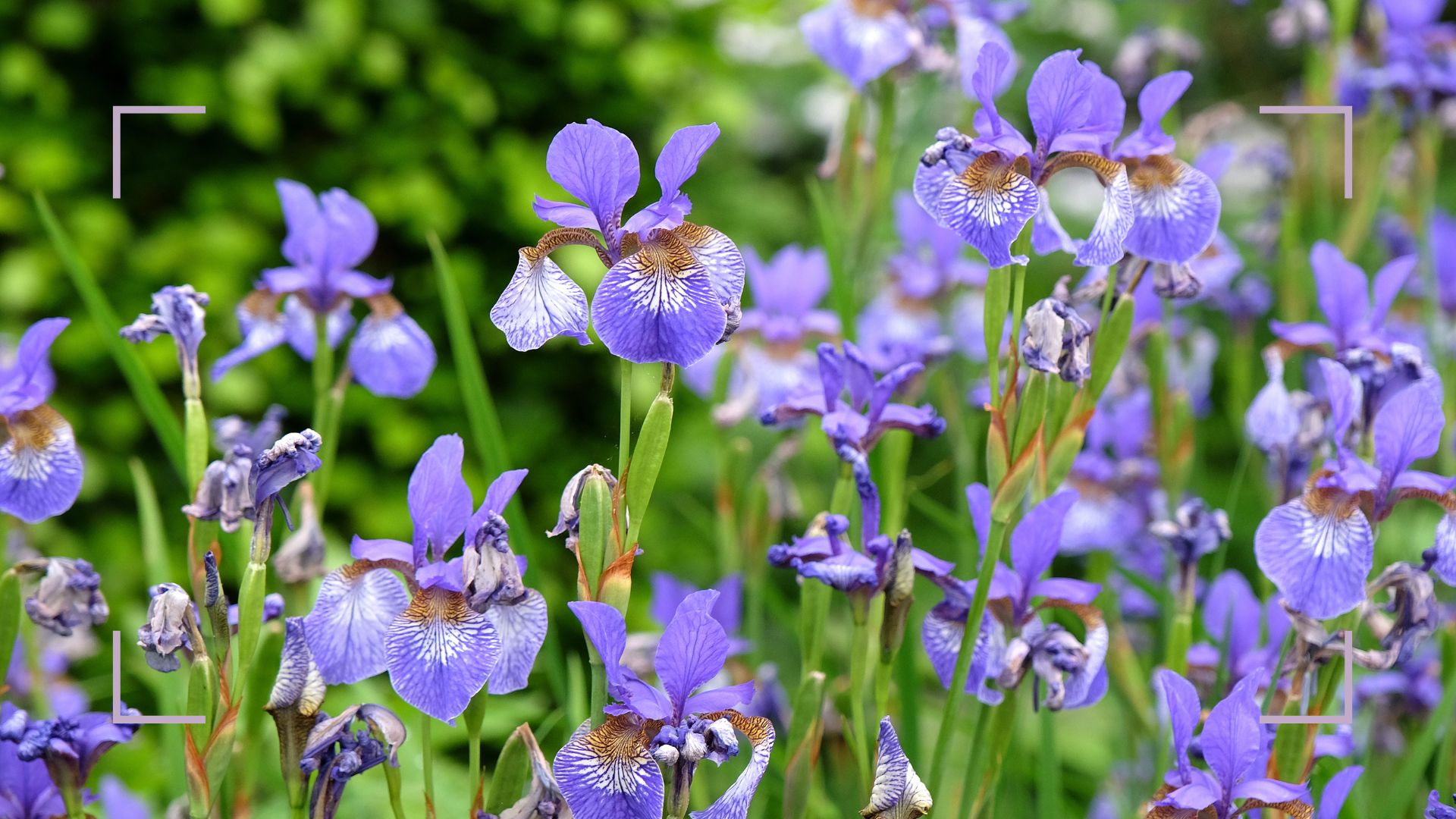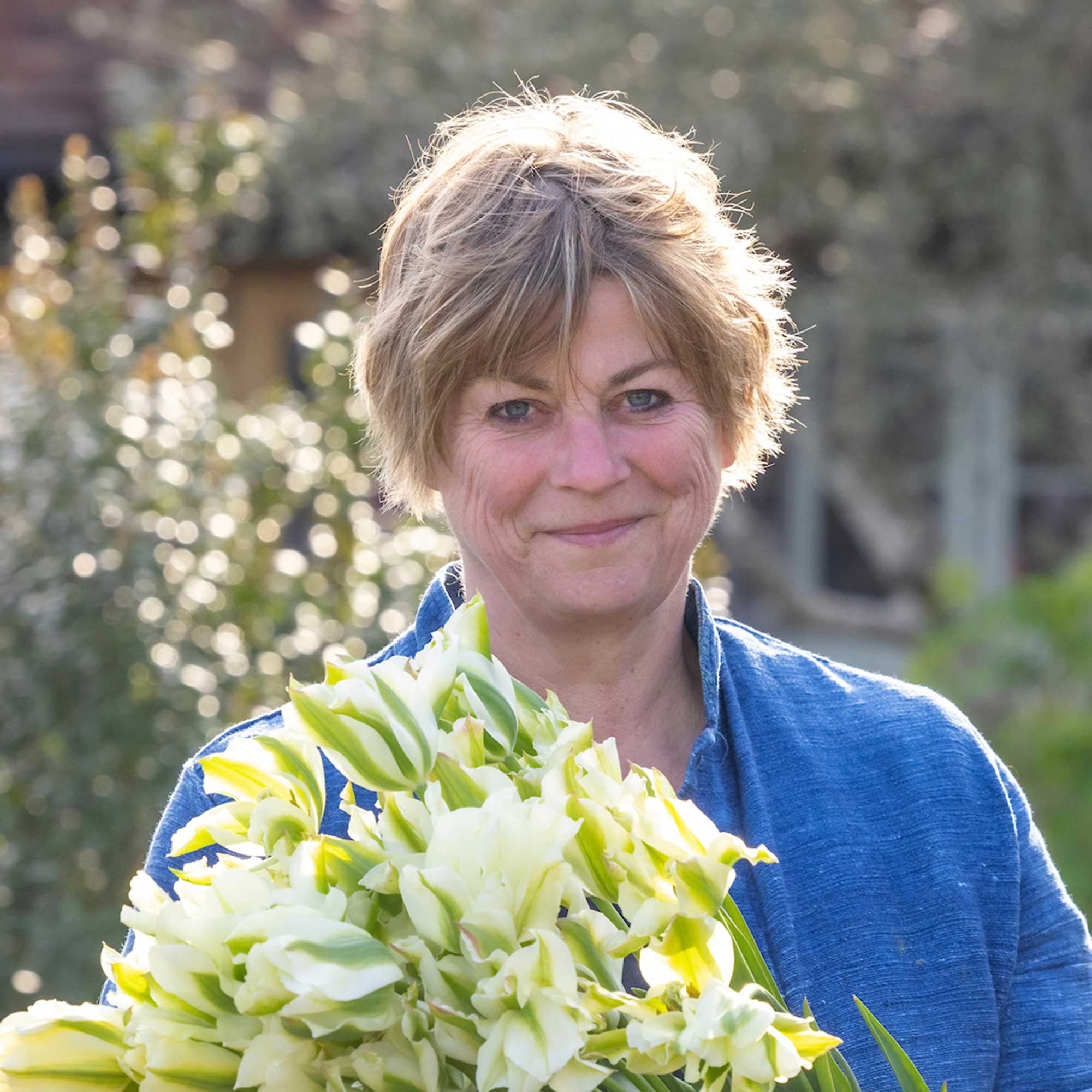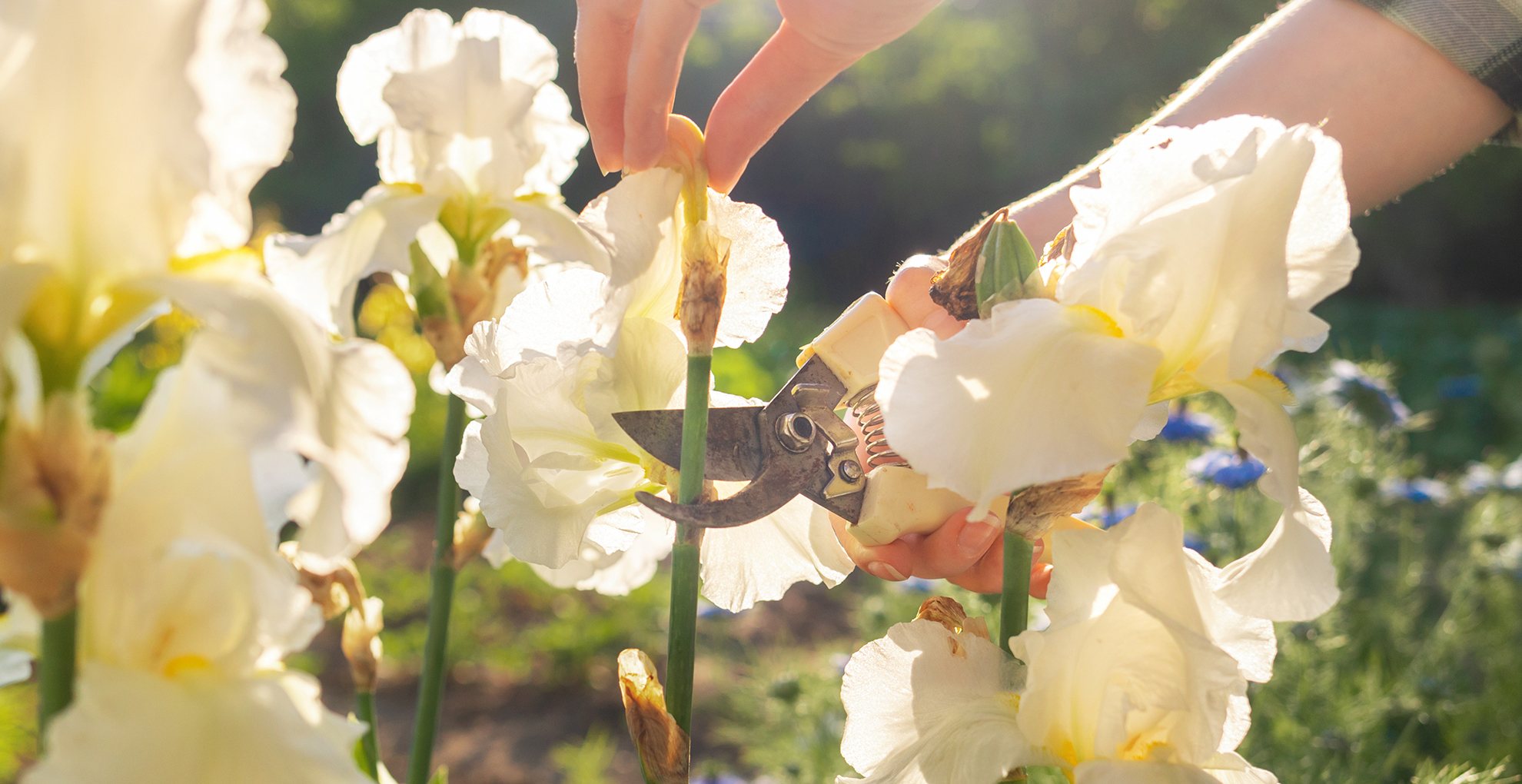Should you deadhead irises after they finish flowering? Garden experts reveal what they do
Horticultural experts share their tips on how to ensure better blooms ahead of next year


Elegant irises fill our gardens with joy until they slowly start fading away. But fear not, experts say they will return bigger and better next year with the right due care and attention.
These vibrant showstoppers are the ideal garden trend for displaying a canvas of uplifting seasonal colour. “Irises create a stunning statement in borders or containers providing drifts of bold and brilliant colour for months at a time," says gardening expert Sarah Raven.
"From compact varieties to glamorous bearded types in shades of fiery copper, soft mauve and deep blue, these standout perennials can be left to return year after year.”
In the same way you may question whether you should deadhead peonies, the secret to ensuring this low-maintenance garden favourite blooms bigger and better every year is knowing what to do with the flowers after they start to wither.
Should you deadhead irises after flowering?
We've spoken with leading gardening experts to unearth what the professionals do with irises after flowering to ensure they return year after year more glorious than the last.
Experts say you should deadhead irises after the blooms have faded, similar to what you do with Tulips because the plant needs to reserve energy.
“After flowering, cut old stems where the flower meets the foliage at the base," Sarah Raven advises. "For bulbs, leave the foliage in place and only remove it once it has fully died back."
Sign up to our free daily email for the latest royal and entertainment news, interesting opinion, expert advice on styling and beauty trends, and no-nonsense guides to the health and wellness questions you want answered.
"This will allow the leaves to photosynthesise, supplying the plant with energy, creating the best chance for flowering the following year.”
By cutting off dead flowers, the plant won't waste energy on seed production and can focus on root and foliage growth instead.

Since the publication of her first book, The Cutting Garden, Sarah has led the way in introducing a new kind of productive gardening. Her aim is to create intense colour and beauty, combined with a practical and easy-to-achieve approach. Her popular gardening podcast Grow, Cook, Eat, Arrange has achieved 4.1 million downloads. She’s published 15 books and runs Sarahraven.com.

"Yes you should remove the dead blossoms after your irises bloom," agrees professional gardener Jane Dobbs. "The act of deadheading the flowers keeps the plants from ripening their seeds."
"Most iris varieties have a specific blooming period, so keeping them blooming all summer can be tricky," says Jane. "If you want to extend the blooming season, choose reblooming iris varieties. They're bred to bloom more than once in a season. You can plant them in late summer or early autumn and extend their flowering period.
Suggesting a form of succession planting Jane advises: "Plant irises with staggered blooming times. Plants that bloom early, mid, and late in the season can provide continuous blooms all summer long." (More on this below)

Gardening is Jane's passion, having built and maintained stunning outdoor spaces for over a decade. Taking care of all the garden projects at Allans' Gardeners is her responsibility as lead gardener. A wide range of horticultural practices come into play in Jane's work, from landscape design to plant and lawn care.
How to deadhead irises
Similar to what you do with daffodils after flowering it's important to remove the dead flower heads without cutting away the foliage below because that continues to feed the bulb below the soil's surface by way of photosynthesis.
So how do you deadhead irises? You can simply pinch the heads off for a quick approach but it's recommended to use a professional set of secateurs to make a clean cut to remove the flower head efficiently.
"Once the blooms have faded, cut the stalk down to the base," Jane advises. "Don't cut any of the foliage, because the leaves help the plant get ready to bloom next year."
Gonicc 8" Professional Secateurs: RRP: £29.95 currently £18.95 at Amazon
This premium set of professional secateurs is Amazon's no.1 best seller. The highly recommended tool comes with praise on the comfortable 'padded handles' and quality premium titanium steel blades which offer a crisp clean cut every time.
FAQs
What are the benefits of deadheading irises?
As we've explored above the act of deadheading irises after flower benefits the plant by conserving energy that goes back into the foliage and bulb rather than being wasted on trying to reseed.
There's also another key benefit, as Jane explains: "Irises usually bloom once a season, but deadheading can sometimes promote another, smaller bloom," Jane explains. "Getting rid of dead flowers keeps plants healthy because they attract pests and diseases."
How do you keep irises blooming all summer?
“To maintain a succession of colour and variety all summer long, the trick is to plant iris bulbs that flower at different times," says Sarah Raven. "Dutch irises and Siberian irises will provide striking flowers from May through to June.
"Plant these alongside Bearded irises and Japanese water irises for an extra month of foliage, as these flower well into July."
“Plant iris bulbs in full sun as even a little shade can impact their likelihood of flowering. Overcrowding can also impact the success of blooms, so plant bulbs 12-24 inches apart for bigger and better displays.
Some varieties of irises can reach sizeable heights, so you can minimise the impact of wind damage by planting taller types in a sheltered position or individually staking plants with a cane.”

Deep purple bearded Iris in a late spring garden
"The best way to get reblooming irises is to fertilise them again after the first wave of flowering is over," adds Jane. "Irises shouldn't be overwatered; too much moisture can cause the roots to rot. When it's hot and dry, water consistently and deeply."
"Rhizomes should be exposed. Direct sunlight is needed at least 6 hours a day for the iris. To keep the plants moist and weeds at bay, mulch around the base."
RocketGrow Magic Mulch: £9.99 at Crocus
This peat-free blend is a 100% sustainable mulch harvested on organic Somerset farms from traditional crops: maize, rye and grass.
Can you leave iris bulbs in the ground all year round?
As a hardy perennial plant iris bulbs can stay planted all year round for many consecutive years, in both the ground and pots. With the right planting and care, they will clump up and produce new blooms the following year, provided they are planted in well-draining soil to withstand harsher winter weather conditions.
The bulbs will thrive provided they have enough space to spread out, as the bulbs will multiply over time and may need some breathing space.
When irises become congested they fail to thrive, in this instance, we recommend digging the bulbs up and dividing them, before planting again. "Early fall is the best time to dig up the bulbs and separate them," suggests Jane.
Leaving iris bulbs in your garden means they should flower again next spring to provide a riot of seasonal colour in beds, borders and pots.
A great way to enrich your soil for free is by using bananas in your garden or orange peel in your garden to provide extra nutrients to aid future plant growth.
After you've finished deadheading you can use the garden waste to make compost at home to keep waste minimal. Generally tidy up your plants by removing any stray petals or broken stems, sometimes damaged after the stress of heavy rain downpours. Speaking of which, make the most of summer showers by employing a rainwater harvesting idea to use the source around the garden for general watering.

Tamara is a highly experienced homes and interiors journalist with a career spanning over 22 years. Now the Lifestyle Editor of womanandhome.com, she previously spent 18 years working with the style teams at Country Homes & Interiors and Ideal Home. With these award-winning interior teams, she gained a wealth of knowledge and honed her skills and passion for styling and writing about every aspect of lifestyle and interiors.
A true homes and interiors expert, Tamara has been an ambassador for leading interior brands on multiple occasions, including appearing on Matalan’s The Show and presenting at top interior trend forecasting events such as the Autumn Fair and Spring Fair.

